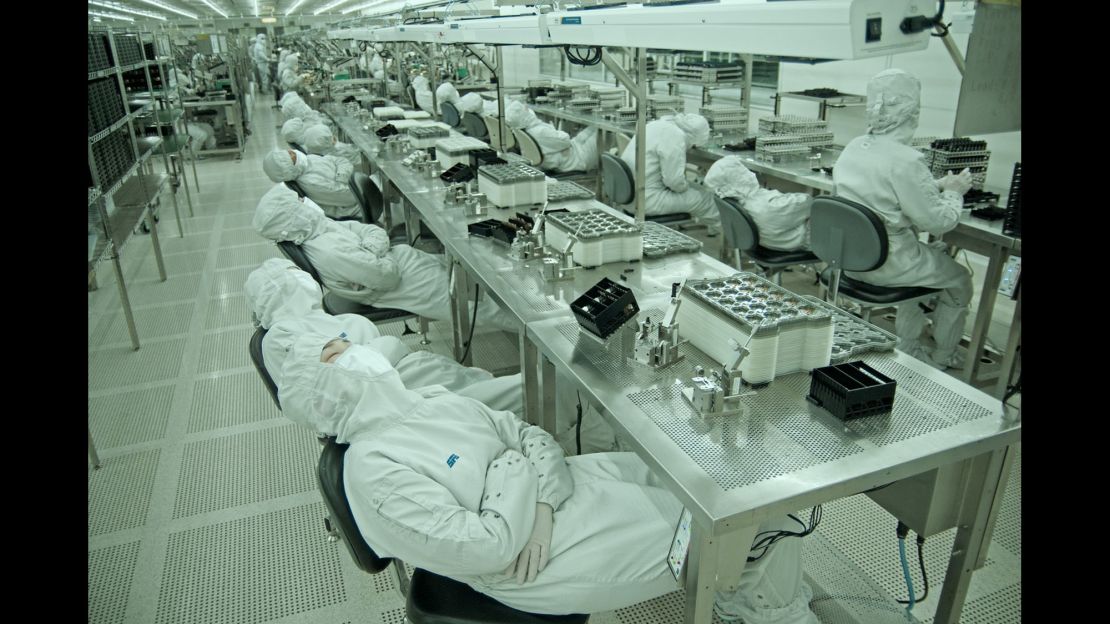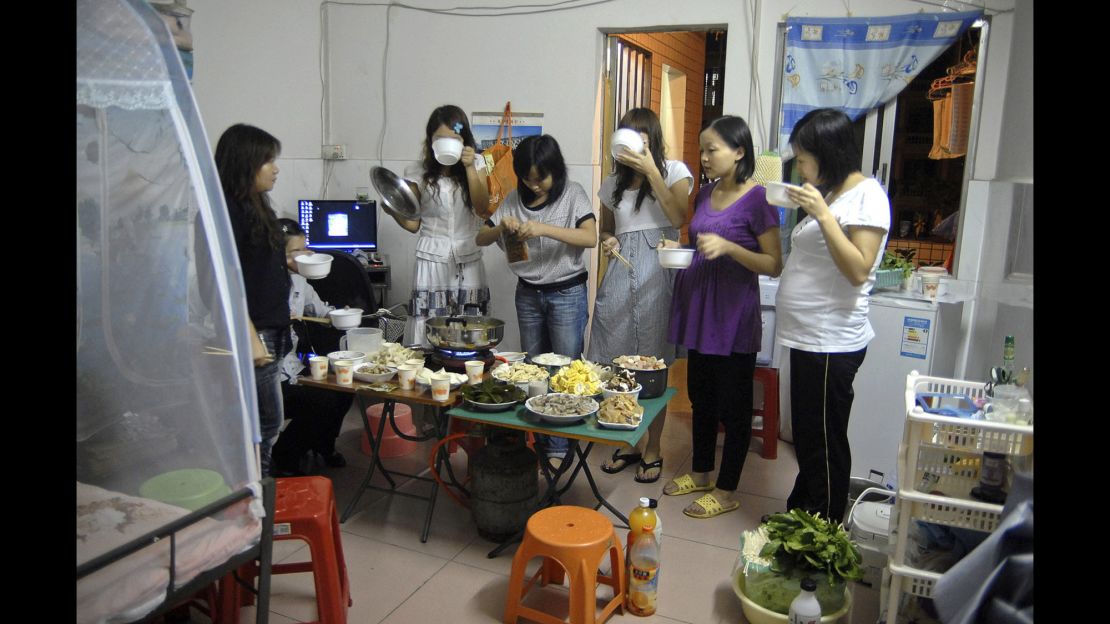Story highlights
Zhan Youbing is a former factory worker, now an acclaimed photographer
Zhan uses his intimate knowledge of migrant workers to capture their lives on and off the assembly line
"I have lived this life," he says. "So I know exactly what their situations are"
The Lunar New Year is the only time of year China’s army of migrant workers gets to go home.
Known as “chunyun,” the annual travel crush is the world’s largest migration of humans.
The lengths workers go to to see their families during the country’s biggest holiday, which this year began February 19, is one facet of migrant worker life captured by factory hand turned photographer, Zhan Youbing.
For more than a decade, Zhan was himself one of China’s 250-million strong “floating population” of migrant workers.
Originally from the rural, inland province of Hubei, he worked as a security guard in the factories that surround the southern boom town of Guangzhou, over a thousand kilometers away.
Familiar ground
Now a professional photographer, he trains his camera lens on those he left behind.
“I have lived this life,” he says. “So I know exactly what their situations are.”
For the past 10 years, he has photographed workers in eight factories in Dongguan, a factory town near Guangzhou, documenting their life on and off the assembly lines.
The scenes Zhan has captured range from the bizarre to the intimate.

In one electronics factory, workers resembling astronauts – their protective clothing only reveals their eyes – take a quick nap. But he also shows a life where strong friendships are forged – at a dormitory dinner party for example.

He’s taken more than 400,000 photos and they’ve been been exhibited across the country. But he didn’t go to any of the exhibitions.
“I didn’t have the travel expenses,” he says.
In November, he published a book called “I’m a Migrant Worker,” a compilation of writing and more than 150 photos.
Map captures biggest human migration on earth
Insecure life
Zhan started taking photos for an internal factory publication in 2002. He then took vocational classes.
When he returned to his hometown for the Lunar New Year celebrations, he found photos a better way than words to describe life in the factory to his mother and mother-in-law.
Yet it was a deeper feeling of insecurity that drove him to keep documenting the life of migrant workers - a turbulent life over which they have little control.
“Sometimes, you want to jump ship for better pay at another factory shortly after starting your current job,” Zhan says.
“Yet at other times when you want to stay on and settle down, you get fired or the factory gets taken over.”
A sad cycle
If photography meant self-fulfillment for Zhan in the early days, it is now more of a mission. He says the more photos he takes, the more deeply he understands the issues migrants face.
Zhan says he is particularly concerned about the plight of children left behind by parents.
Restrictions on housing, education and healthcare, make it hard for migrant workers to bring along their kids and they are often raised by grandparents, relatives or neighbors.
“The parents have devoted their lives to the manufacturing industry, but they barely get anything. Now their kids start entering the sad cycle.”
Despite his success, Zhan thinks himself no different to a migrant worker and says the feeling of uneasiness from that time will never fade.
“I feel like rootless duckweed on a strange land.”












